
Guayama: The Enchanting Southern Charm of Puerto Rico
Discover Guayama: A Hidden Gem in Southern Puerto Rico with Rich History, Natural Beauty, and Vibrant Culture.
Guayama, nestled on the southern coast of Puerto Rico, offers a delightful blend of history, culture, and natural beauty. Known as the 'City of Witches,' Guayama enchants visitors with its colonial architecture, vibrant festivals, and welcoming locals. This charming city provides a slower pace of life, perfect for those looking to escape the hustle and bustle of larger tourist spots. Stroll through the historic downtown area, where you can admire the beautifully preserved buildings that date back to the Spanish colonial era. The main square, Plaza de Recreo Cristóbal Colón, serves as the heart of the city and is surrounded by key landmarks such as the Guayama Cathedral and the Casa Cautiño Museum. The latter offers a glimpse into the opulent lifestyle of the 19th-century sugar barons. Nature enthusiasts will find plenty to explore in Guayama. The Carite Forest Reserve, located just a short drive from the city center, offers hiking trails through lush landscapes and opportunities for birdwatching. For a more relaxed experience, head to Pozuelo Beach, where you can unwind with the gentle waves and stunning views of the Caribbean Sea. Guayama also boasts a rich cultural scene, with festivals and events happening throughout the year. The Fiestas Patronales, held in honor of Saint Anthony of Padua, feature parades, music, and traditional dances. Don't miss the opportunity to taste local delicacies at the various food stalls that pop up during these celebrations.
Local tips in Guayama
- Visit the Casa Cautiño Museum for an insight into the city's colonial past.
- Take a hike in the Carite Forest Reserve to enjoy nature and spot local wildlife.
- Plan your trip around the Fiestas Patronales to experience local culture and festivities.
- Try the local cuisine at food stalls during festivals for an authentic taste of Guayama.
- Spend a day relaxing at Pozuelo Beach for a tranquil seaside experience.
Guayama: The Enchanting Southern Charm of Puerto Rico
Guayama, nestled on the southern coast of Puerto Rico, offers a delightful blend of history, culture, and natural beauty. Known as the 'City of Witches,' Guayama enchants visitors with its colonial architecture, vibrant festivals, and welcoming locals. This charming city provides a slower pace of life, perfect for those looking to escape the hustle and bustle of larger tourist spots. Stroll through the historic downtown area, where you can admire the beautifully preserved buildings that date back to the Spanish colonial era. The main square, Plaza de Recreo Cristóbal Colón, serves as the heart of the city and is surrounded by key landmarks such as the Guayama Cathedral and the Casa Cautiño Museum. The latter offers a glimpse into the opulent lifestyle of the 19th-century sugar barons. Nature enthusiasts will find plenty to explore in Guayama. The Carite Forest Reserve, located just a short drive from the city center, offers hiking trails through lush landscapes and opportunities for birdwatching. For a more relaxed experience, head to Pozuelo Beach, where you can unwind with the gentle waves and stunning views of the Caribbean Sea. Guayama also boasts a rich cultural scene, with festivals and events happening throughout the year. The Fiestas Patronales, held in honor of Saint Anthony of Padua, feature parades, music, and traditional dances. Don't miss the opportunity to taste local delicacies at the various food stalls that pop up during these celebrations.
When is the best time to go to Guayama?
Iconic landmarks you can’t miss
La Casa De Los Pastelillos
Experience the vibrant taste of Puerto Rico at La Casa De Los Pastelillos, a culinary gem in Guayama offering authentic Latin American flavors.
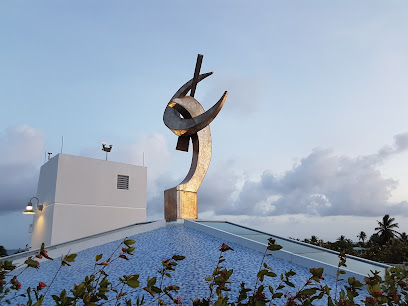
Céntrico
Explore Céntrico in Guayama, Puerto Rico: Your ultimate shopping destination for local and international brands, dining, and family entertainment.
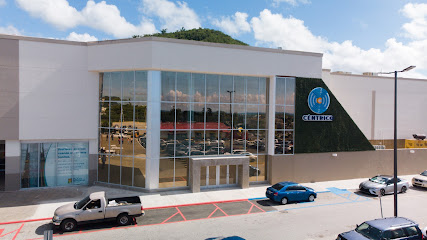
Bosque Estatal de Carite
Discover the lush landscapes and diverse wildlife of Bosque Estatal de Carite, a must-visit national forest in Puerto Rico, perfect for nature lovers.
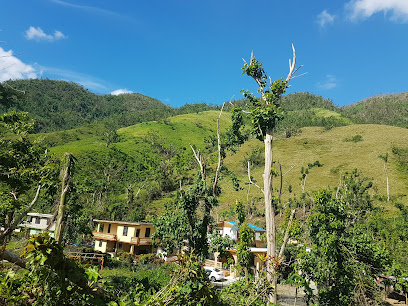
Tazza D' Oro Caffè
Experience the authentic flavors of Puerto Rico at Tazza D' Oro Caffè in Guayama, where local cuisine meets warm hospitality in a charming setting.

Norma Bakery
Experience the delightful flavors of Puerto Rico at Norma Bakery, your go-to spot for delicious pastries and hearty breakfasts in Guayama.
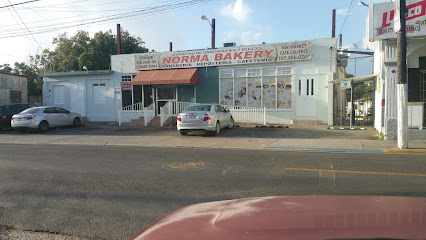
Rene's BBQ
Discover the authentic flavors of Puerto Rican barbecue at Rene's BBQ in Guayama, where every dish is a celebration of local culinary traditions.
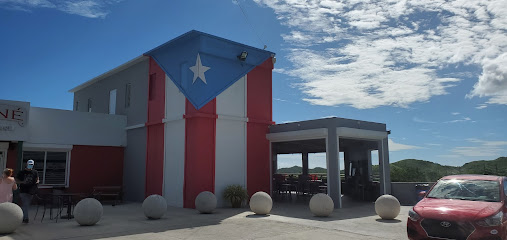
Cano's Bakery
Indulge in the flavors of Puerto Rico at Cano's Bakery, where delightful pastries and a warm atmosphere await every visitor.
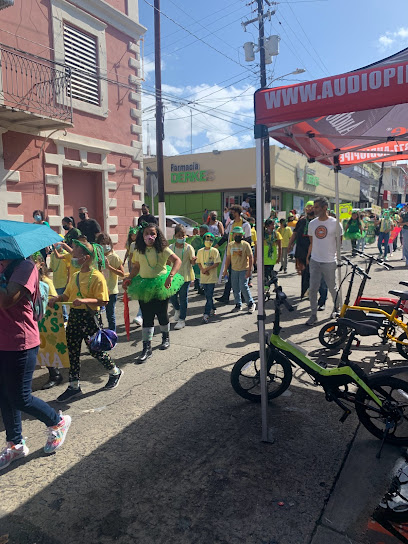
Mojito Grill & Sport Bar
Discover Mojito Grill & Sport Bar in Guayama, where family-friendly dining meets vibrant sports entertainment for an unforgettable experience.
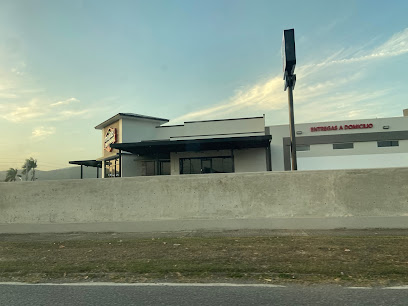
La Vida
Discover La Vida in Guayama: A delightful brunch spot serving up local flavors in a cozy atmosphere, perfect for tourists seeking culinary experiences.
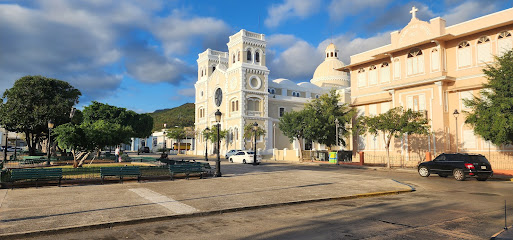
Rex Cream
Experience the delightful flavors of Rex Cream, Guayama's premier ice cream shop, where every scoop is a taste of tropical bliss.
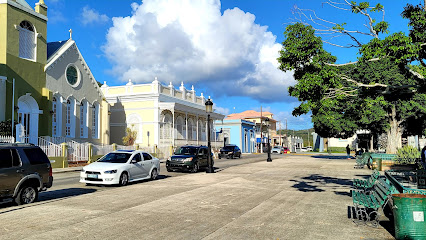
Del K'mpo Al Pueblo
Experience authentic Puerto Rican flavors at Del K'mpo Al Pueblo in Jobos, where local ingredients meet vibrant culinary traditions.

Las Casitas Grill Restaurant
Experience the essence of Puerto Rican cuisine at Las Casitas Grill Restaurant, a delightful spot in Guayama offering fresh, authentic flavors.
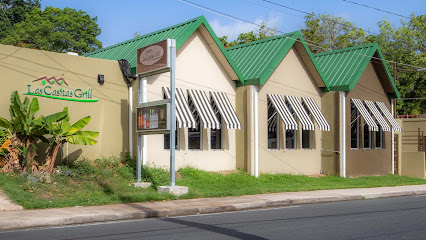
Escape by De Fiesta
Discover Escape by De Fiesta in Guayama, Puerto Rico: a delicious blend of pizza and steakhouse dishes in a welcoming atmosphere.

La Muralla China
Discover the vibrant flavors of Chinese cuisine at La Muralla China in Guayama, Puerto Rico, where fast food meets authentic taste.
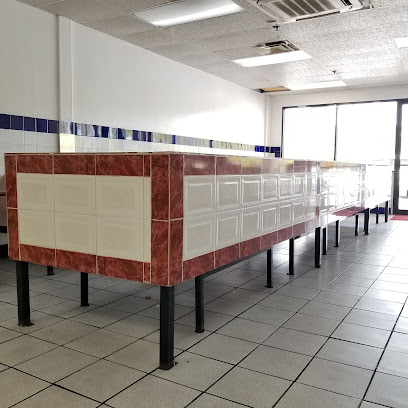
The Salvation Army Ray & Joan Kroc Corps Community Center Guayama
Discover the heart of Guayama at The Salvation Army Ray & Joan Kroc Corps Community Center, a vibrant hub for recreation and culture.
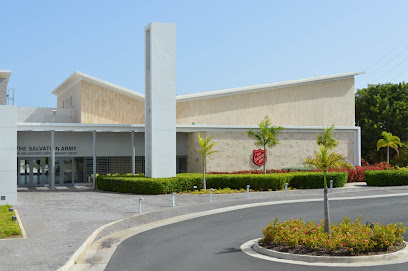
Unmissable attractions to see
Toro Verde Adventure Park
Discover the thrill of Toro Verde Adventure Park in Orocovis, Puerto Rico, where adventure meets breathtaking natural beauty.
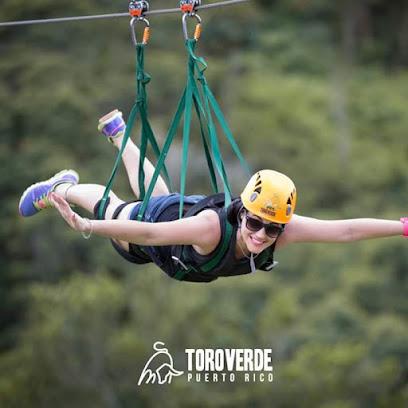
Centro de Bellas Artes de Caguas
Experience the vibrant arts and culture at Centro de Bellas Artes de Caguas, a hub for theatrical performances and visual arts in Puerto Rico.
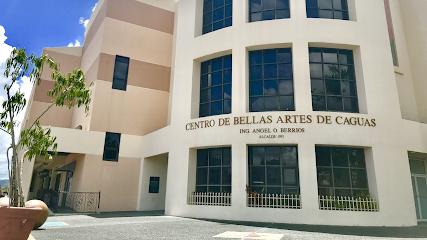
Jardín Botánico y Cultural William Miranda Marín
Explore the lush landscapes and cultural richness of Jardín Botánico y Cultural William Miranda Marín, a botanical garden in Caguas, Puerto Rico.
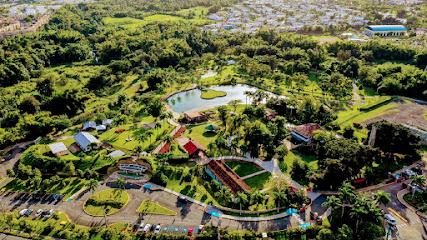
Cascada Chorro de Doña Juana
Explore the breathtaking beauty of Cascada Chorro de Doña Juana, a stunning waterfall in Orocovis, Puerto Rico, perfect for nature lovers and adventure seekers.
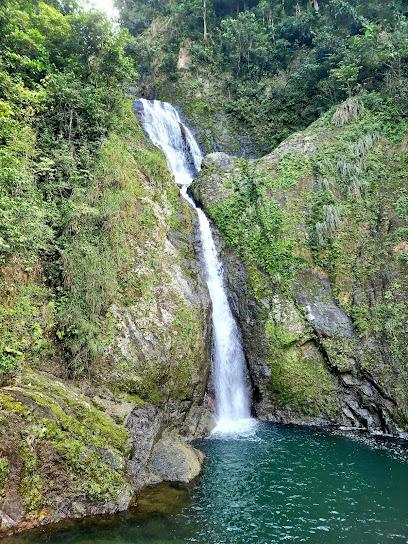
Aguas Termales de Coamo
Discover the soothing thermal waters of Aguas Termales de Coamo, a serene medical spa in Puerto Rico that promises relaxation and rejuvenation amidst nature.
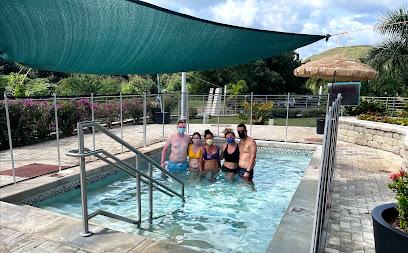
Bosque Estatal de Carite
Explore the lush landscapes and diverse wildlife of Bosque Estatal de Carite, a hidden gem in Puerto Rico's national forest.
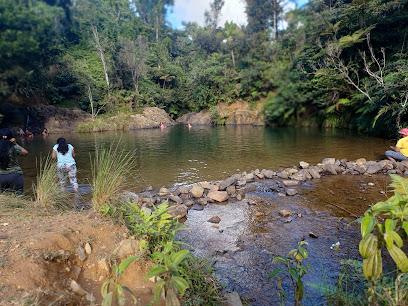
Charco El Hippie
Explore the serene beauty of Charco El Hippie, a nature preserve in Naguabo, Puerto Rico, known for its stunning pools and lush landscapes.
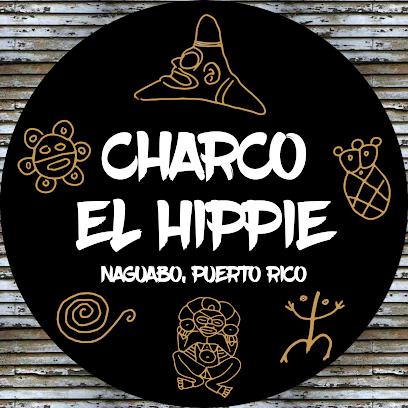
Old Harbor Brewery
Experience the rich flavors of Puerto Rico at Old Harbor Brewery, where craft beer meets local tradition in a vibrant setting.
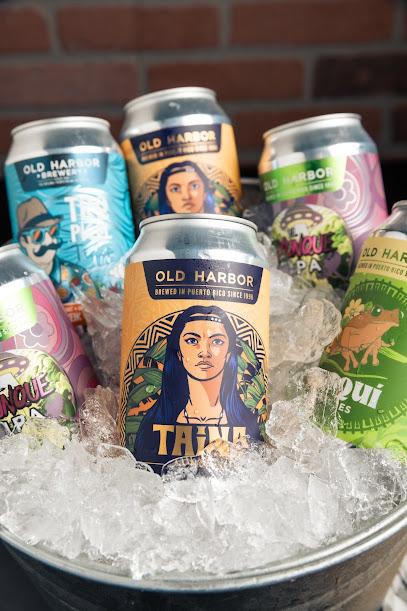
Arroyo Surfing Park
Experience the ultimate surfing adventure at Arroyo Surfing Park, a tropical paradise that combines thrilling waves with family-friendly fun in Puerto Rico.

Ron del Barrilito - Hacienda Santa Ana
Explore the historical charm and artisanal rum of Ron del Barrilito in Bayamón, Puerto Rico, a captivating blend of culture and craftsmanship.
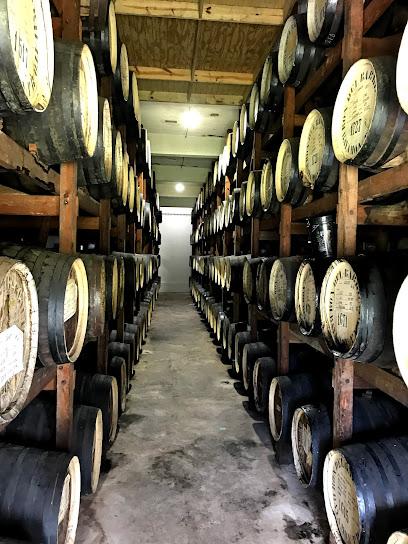
El Salto Collores Waterfall
Experience the breathtaking beauty of El Salto Collores Waterfall in Juana Díaz, a stunning national reserve and must-visit tourist attraction.
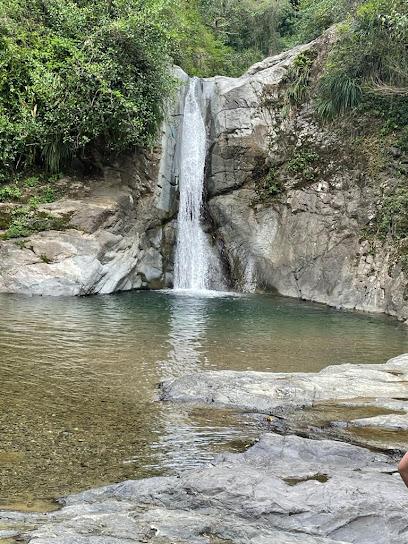
Plaza Pública Ramón Frade de León
Experience the vibrant culture of Cayey at Plaza Pública Ramón Frade de León, a stunning city park ideal for relaxation and local events.

Torre Britton
Experience the beauty and history of Torre Britton, a stunning landmark in Río Grande, Puerto Rico, surrounded by breathtaking coastal views.
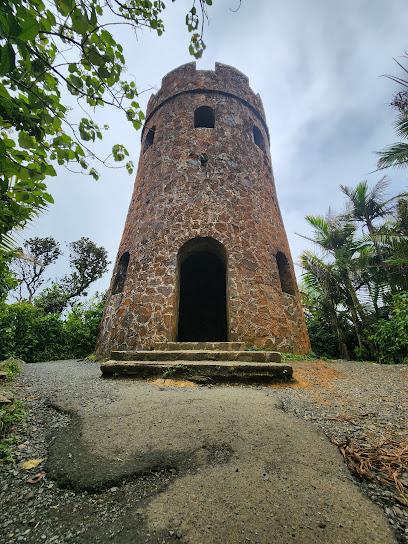
El Yunque
Discover the enchanting beauty of El Yunque, Puerto Rico's lush rainforest, with its stunning waterfalls, diverse wildlife, and rich cultural history.
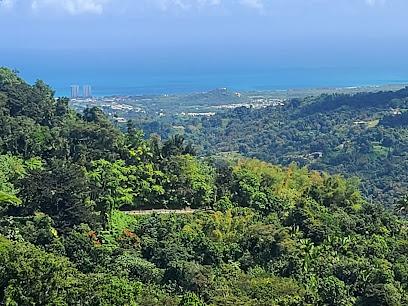
Catedral Dulce Nombre de Jesús
Explore the breathtaking Catedral Dulce Nombre de Jesús in Caguas, a stunning blend of history, architecture, and spirituality in the heart of Puerto Rico.
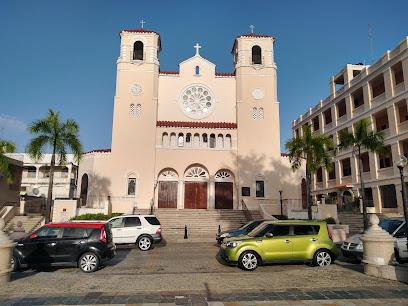
Essential places to dine
Hecho en Casa
Experience authentic Puerto Rican cuisine at Hecho en Casa in Guayama - where every meal feels like a family gathering.

Tazza D' Oro Caffè
Experience the authentic taste of Puerto Rican coffee at Tazza D' Oro Caffè in Guayama—where flavor meets culture.
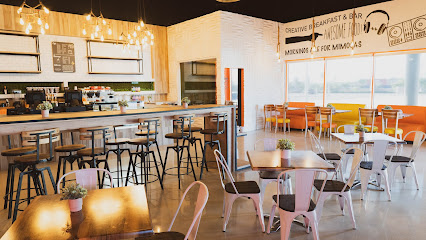
Rene's BBQ
Experience authentic Puerto Rican barbecue at Rene's BBQ in Caimital – where flavor meets tradition in every bite.
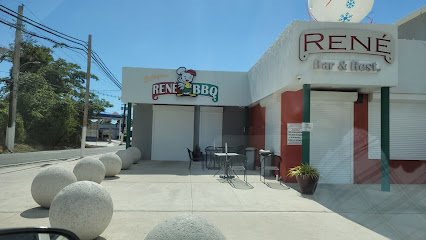
Mojito Grill & Sport Bar
Experience delicious Puerto Rican cuisine and lively sports entertainment at Mojito Grill & Sport Bar in Guayama.
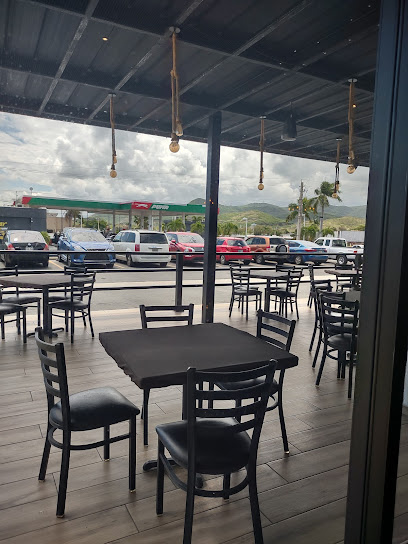
La Vida
Discover La Vida in Guayama: A delightful brunch haven serving fresh local flavors in a cozy atmosphere.
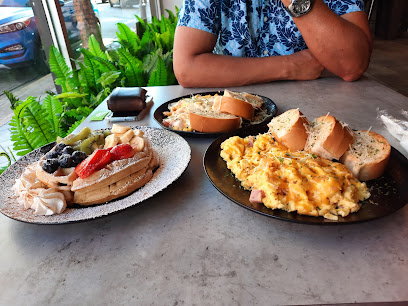
Burger King
Experience fast food at its best in Guayama with Burger King's flame-grilled burgers and breakfast delights.
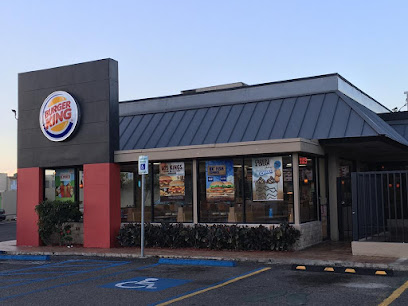
Las Casitas Grill Restaurant
Experience the vibrant flavors of Puerto Rico at Las Casitas Grill Restaurant in Guayama – where tradition meets taste.
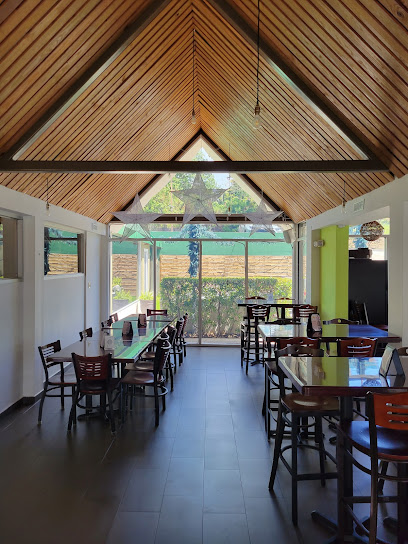
Escape by De Fiesta
Discover delicious pizzas and mouthwatering steaks at Escape by De Fiesta in Guayama - where affordability meets flavor.
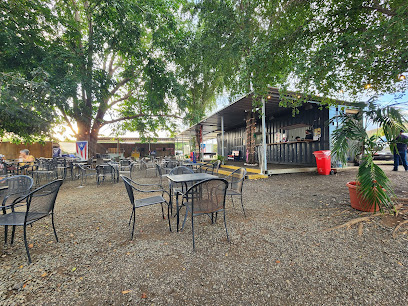
El Gallo Pinto
Experience authentic Puerto Rican flavors at El Gallo Pinto in Guayama – where every dish tells a story.
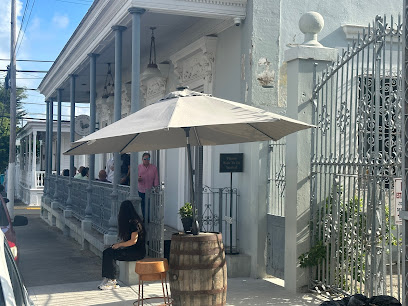
Otoro Sushi
Experience exquisite sushi at Otoro Sushi in Guayama - where tradition meets innovation in every delicious bite.
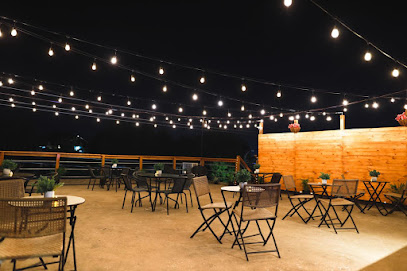
El Mesón Sándwiches (Guayama)
Discover the authentic flavors of Puerto Rico at El Mesón Sándwiches in Guayama – where every sandwich tells a story.
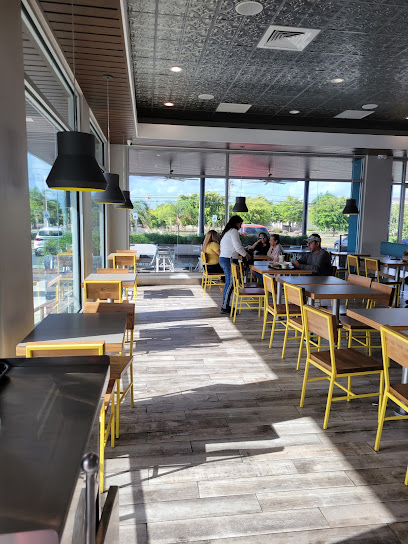
Prime Market
Discover Prime Market in Guayama - where fresh meats, seafood delights, and fine wines come together for an unforgettable culinary experience.
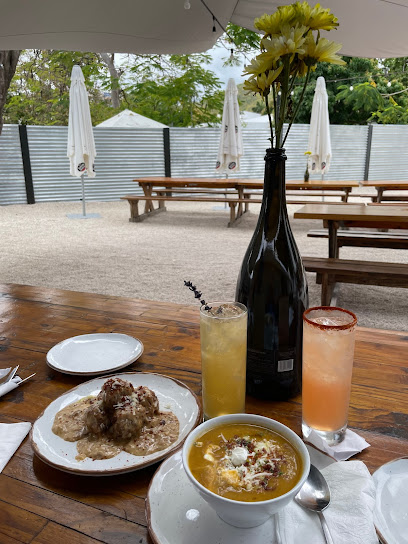
Cuchilandia López
Experience authentic Puerto Rican flavors at Cuchilandia López in Guayama - where every dish is a celebration of local culture.
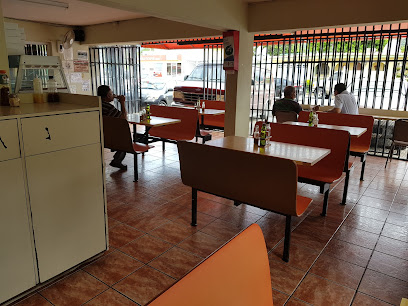
Jody's Pizza & Sport Bar
Experience the ultimate pizza delight at Jody's Pizza & Sport Bar in Guayama – where great food meets sports excitement!
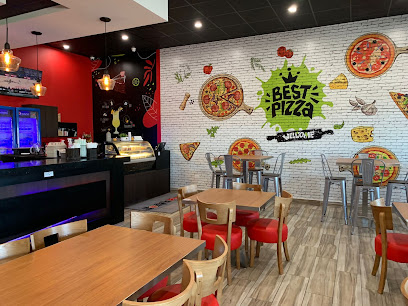
China Garden
Experience authentic Chinese flavors at China Garden in Guayama - where quality meets affordability for every traveler.
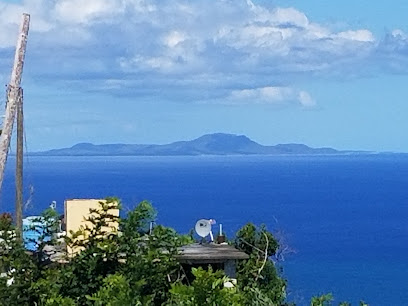
Markets, malls and hidden boutiques
Walmart
Explore Walmart Guayama for a comprehensive shopping experience, featuring groceries, clothing, electronics, and more—all at unbeatable prices.
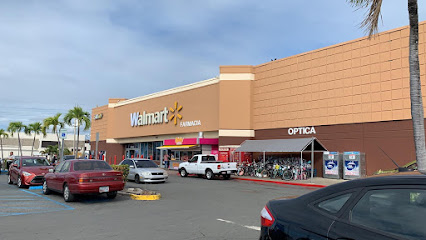
Céntrico
Explore Céntrico in Guayama, a vibrant shopping mall offering a unique blend of local and international shopping experiences in Puerto Rico.
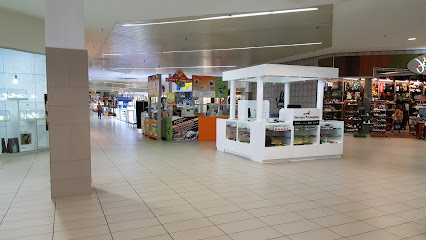
Plaza Walmart
Explore the vibrant Plaza Walmart in Guayama, Puerto Rico, where shopping meets local culture in a fun and inviting atmosphere.
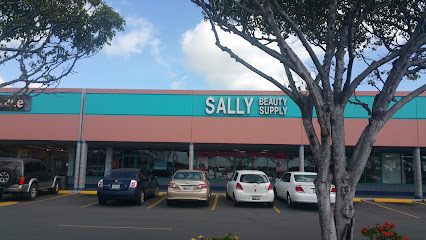
Marshalls
Discover unbeatable fashion deals at Marshalls in Guayama, your go-to destination for stylish clothing and accessories at great prices.
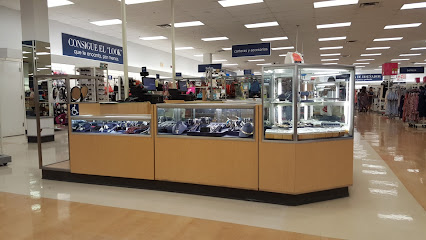
Casa Muebles
Discover the charm of Casa Muebles, where quality furniture and local artistry meet in the heart of Guayama, Puerto Rico.
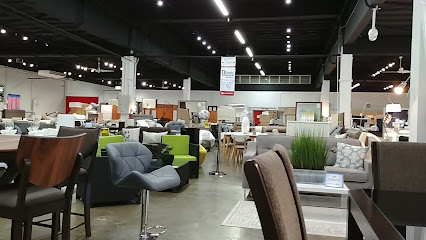
Commerce Plaza
Explore Commerce Plaza in Guayama for a perfect blend of shopping, dining, and entertainment in a vibrant atmosphere.
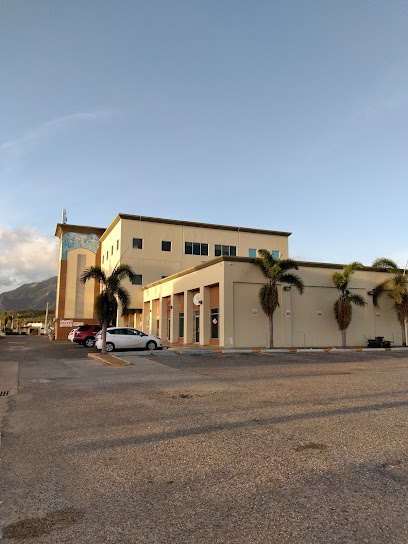
Chinatown & More #9
Explore the unique blend of culture and commerce at Chinatown & More #9 in Guayama, Puerto Rico's vibrant department store.
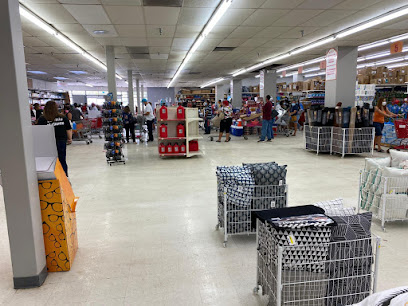
One to Seven Plus
Explore the vibrant selection of home goods at One to Seven Plus, where affordability meets unique Puerto Rican craftsmanship in Guayama.
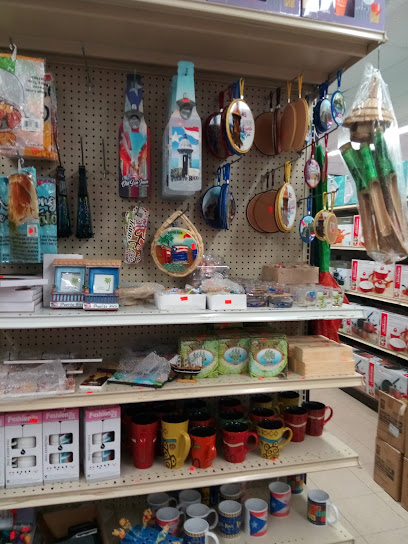
San Vicente Mall
Explore San Vicente Mall in Guayama for a diverse shopping experience with local and international brands, perfect for tourists seeking unique finds.
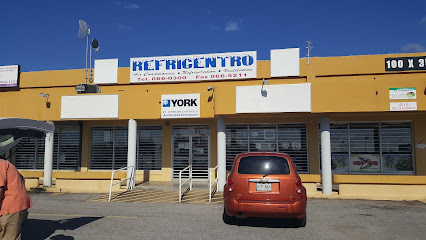
Molino Shopping Center
Experience shopping, dining, and entertainment at the vibrant Molino Shopping Center in Guayama, Puerto Rico.
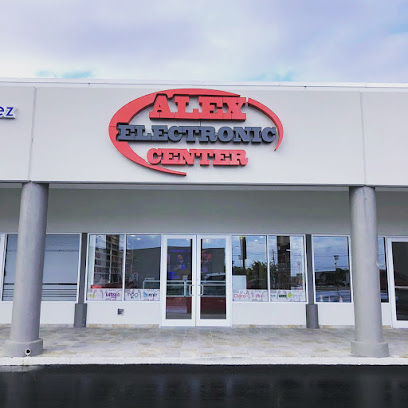
Grandway Guayama Pueblo
Explore the vibrant shopping experience at Grandway Guayama Pueblo, where local culture meets diverse retail offerings in Puerto Rico.
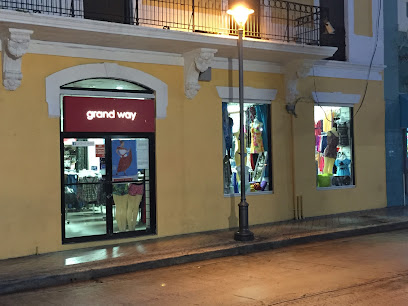
Festejos Party Shop
Discover vibrant decorations and supplies at Festejos Party Shop, your one-stop destination for unforgettable celebrations in Guayama.
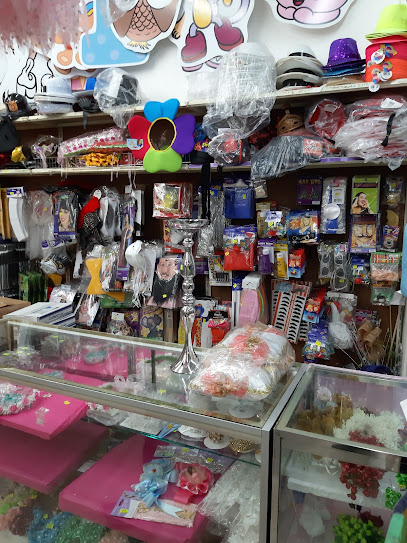
Pompis Store - Guayama
Explore Pompis Store in Guayama: Your one-stop shop for stylish clothing, swimwear, lingerie, and jewelry in the heart of Puerto Rico.
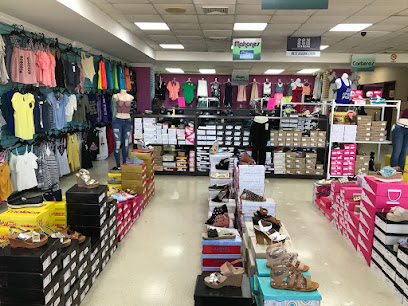
Kim's Moda
Explore Kim's Moda in Guayama for unique clothing that celebrates Puerto Rican culture and style.
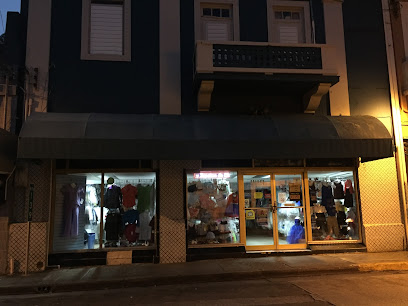
Aloha
Explore Aloha, a charming boutique in Guayama, where unique women's clothing and accessories meet Puerto Rican culture.
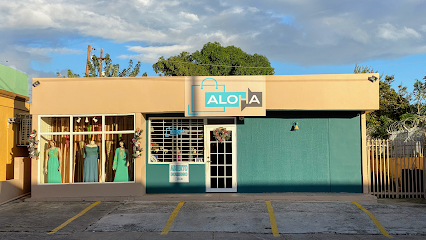
Essential bars & hidden hideouts
Mojito Grill & Sport Bar
Discover the flavors of the Caribbean at Mojito Grill & Sport Bar, a family-friendly haven in Guayama with delicious dishes and lively sports entertainment.
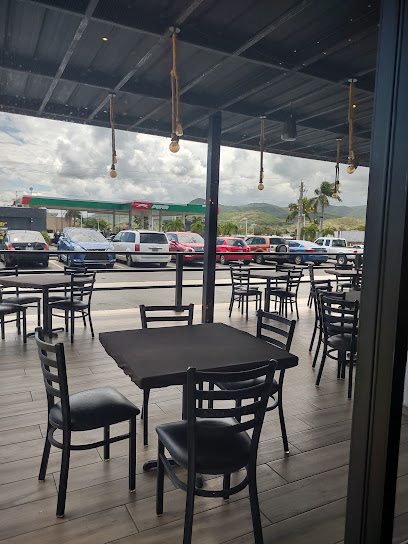
Taco y Cerveza
Discover Taco y Cerveza in Guayama, a vibrant bar offering a fusion of authentic Mexican tacos and refreshing craft beers in a lively atmosphere.
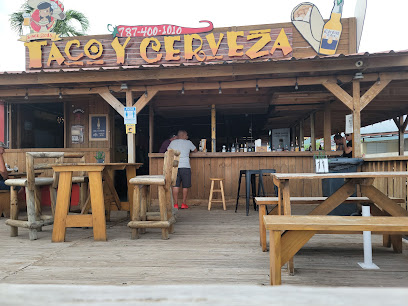
El Manicomio
Experience the lively atmosphere of El Manicomio in Guayama, where local flavors and vibrant nightlife blend seamlessly for an unforgettable night out.
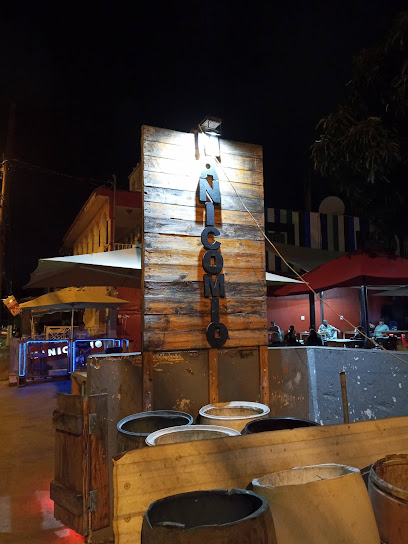
Bourbon Coffee Bar
Experience the heart of Guayama at Bourbon Coffee Bar, where local flavors meet a vibrant atmosphere for an unforgettable dining experience.
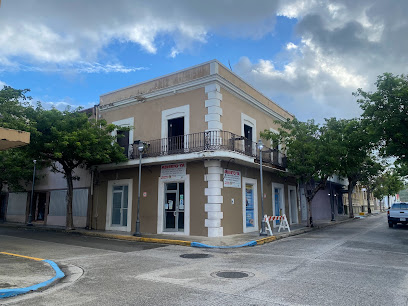
Q'ltura | Beer, Cocktails and Music
Discover the heart of Guayama's nightlife at Q'ltura, where great beer, cocktails, and live music create unforgettable experiences.
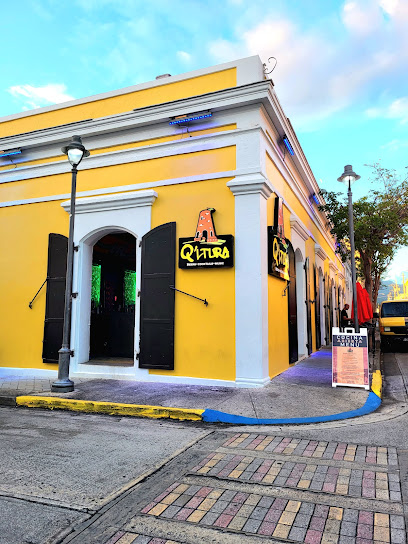
La Parada Liquor Store
Discover the vibrant atmosphere of La Parada Liquor Store in Guayama Pueblo, where local spirits and community come together for an unforgettable experience.
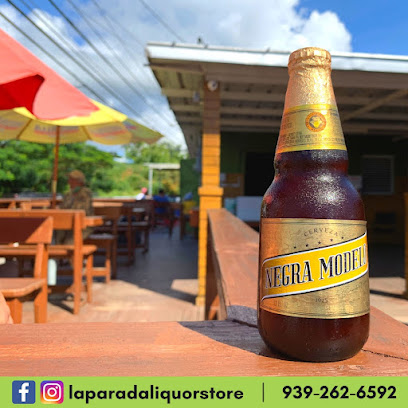
Licho's Place
Experience the vibrant nightlife at Licho's Place in Guayama, where delicious cocktails and live music create an unforgettable atmosphere.
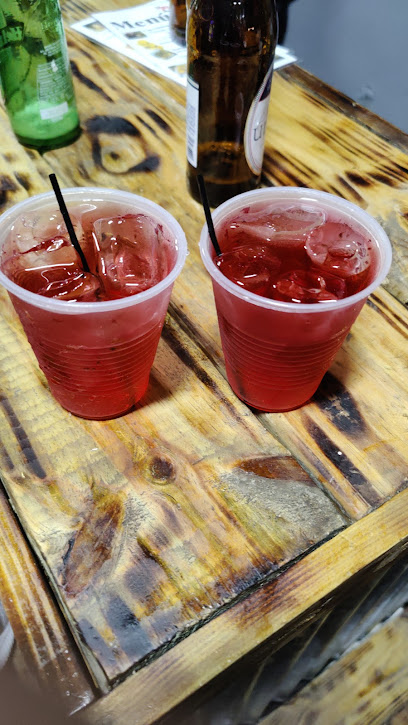
El Marullo Sport Bar
Discover the lively El Marullo Sport Bar in Guayama, where delicious food meets the excitement of live sports in a welcoming environment.

Hostos Beergarden
Experience the lively nightlife at Hostos Beergarden, a vibrant bar in Guayama offering local beers, cocktails, and a welcoming atmosphere for all.
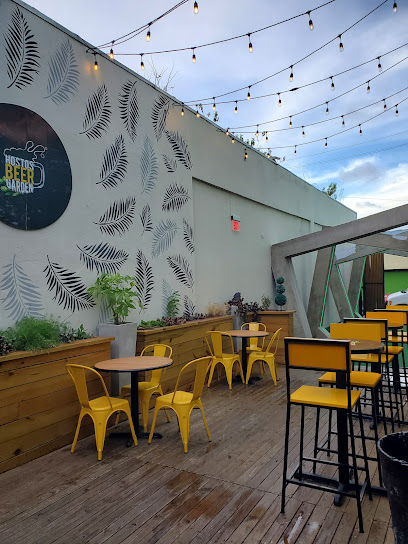
14 Diez
Experience the vibrant nightlife at 14 Diez, a lively bar in Guayama offering great music, signature cocktails, and a welcoming atmosphere.

La Es-k-ina Sports Bar & Grill
Discover La Es-k-ina Sports Bar & Grill in Guayama, Puerto Rico - A lively spot blending delicious food with thrilling sports action!
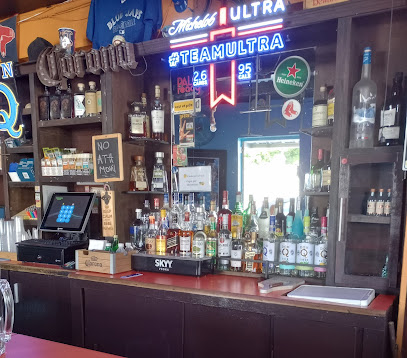
El Nuevo 8 Brujo
Discover El Nuevo 8 Brujo, a lively bar in Guayama where culture, cocktails, and camaraderie come together in a vibrant atmosphere.
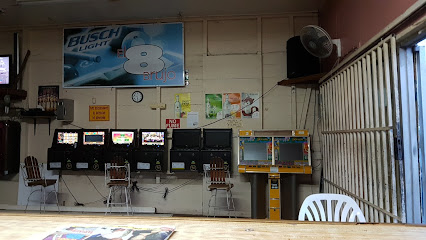
Coppa Bar & Tapas
Discover the vibrant flavors and lively atmosphere of Coppa Bar & Tapas in Guayama, Puerto Rico - a true culinary gem for food enthusiasts.
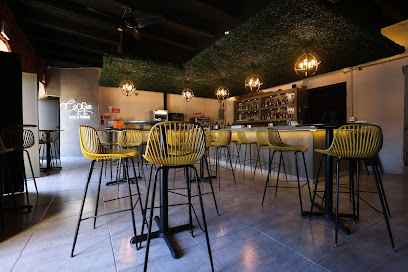
La Zona Gastrobar
Discover La Zona Gastrobar, Guayama's ultimate sports bar for great food, drinks, and an electrifying atmosphere.
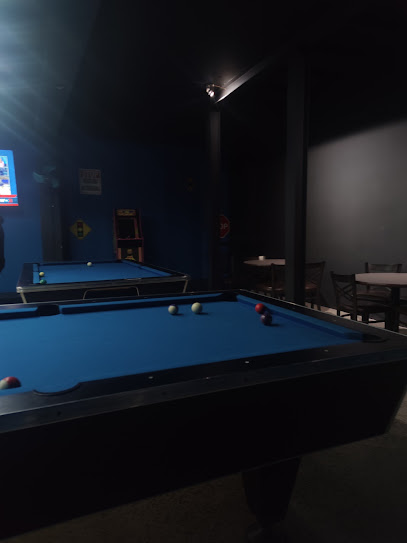
Tu Esquina Boricua
Discover the heart of Puerto Rican culture at Tu Esquina Boricua, where vibrant cocktails and traditional bites create unforgettable experiences.
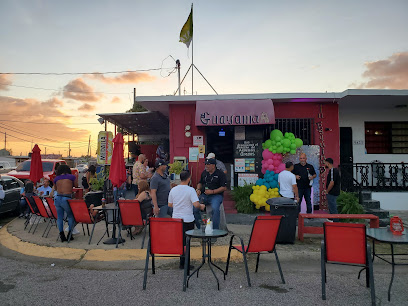
Local Phrases
-
- HelloHola
[oh-la] - GoodbyeAdiós
[ah-dee-ohs] - YesSí
[see] - NoNo
[noh] - Please/You're welcomePor favor/De nada
[por fah-vor/deh nah-dah] - Thank youGracias
[grah-see-ahs] - Excuse me/SorryDisculpe/Perdón
[dee-skool-peh/pehr-dohn] - How are you?¿Cómo estás?
[koh-moh ehs-tahs] - Fine. And you?Bien. ¿Y tú?
[byen. ee too] - Do you speak English?¿Hablas inglés?
[ah-blahs een-glehs] - I don't understandNo entiendo
[noh ehn-tee-ehn-doh]
- HelloHola
-
- I'd like to see the menu, pleaseMe gustaría ver el menú, por favor
[meh goos-tah-ree-ah vehr ehl meh-noo, por fah-vor] - I don't eat meatNo como carne
[noh koh-moh kahr-neh] - Cheers!¡Salud!
[sah-loohd] - I would like to pay, pleaseMe gustaría pagar, por favor
[meh goos-tah-ree-ah pah-gahr, por fah-vor]
- I'd like to see the menu, pleaseMe gustaría ver el menú, por favor
-
- Help!¡Ayuda!
[ah-yoo-dah] - Go away!¡Vete!
[veh-teh] - Call the Police!¡Llama a la Policía!
[yah-mah ah lah poh-lee-see-ah] - Call a doctor!¡Llama a un doctor!
[yah-mah ah oon dohk-tohr] - I'm lostEstoy perdido
[ehs-toy pehr-dee-doh] - I'm illEstoy enfermo
[ehs-toy ehn-fehr-moh]
- Help!¡Ayuda!
-
- I'd like to buy...Me gustaría comprar...
[meh goos-tah-ree-ah kohm-prahr] - I'm just lookingSólo estoy mirando
[soh-loh ehs-toy mee-rahn-doh] - How much is it?¿Cuánto cuesta?
[kwan-toh kwehs-tah] - That's too expensiveEsto es demasiado caro
[ehs-toh ehs deh-mah-syah-doh kah-roh] - Can you lower the price?¿Puede bajar el precio?
[pweh-deh bah-hahr ehl pree-syoh]
- I'd like to buy...Me gustaría comprar...
-
- What time is it?¿Qué hora es?
[keh oh-rah ehs] - It's one o'clockEs la una
[ehs lah oo-nah] - Half past (10)La hora y media (10)
[lah oh-rah ee meh-dee-ah (deh-eez)] - MorningMañana
[mah-nyah-nah] - AfternoonTarde
[tahr-deh] - EveningNoche
[noh-cheh] - YesterdayAyer
[ah-yehr] - TodayHoy
[oy] - TomorrowMañana
[mah-nyah-nah] - 1Uno
[oo-noh] - 2Dos
[dohs] - 3Tres
[trehs] - 4Cuatro
[kwa-troh] - 5Cinco
[seen-koh] - 6Seis
[says] - 7Siete
[syeh-teh] - 8Ocho
[oh-choh] - 9Nueve
[nweh-veh] - 10Diez
[dyehs]
- What time is it?¿Qué hora es?
-
- Where's a/the...?¿Dónde está el/la...?
[dohn-deh ehs-tah ehl/lah] - What's the address?¿Cuál es la dirección?
[kwal ehs lah dee-rehk-syohn] - Can you show me (on the map)?¿Puedes mostrarme (en el mapa)?
[pweh-dehs mohs-trahr-meh (ehn ehl mah-pah)] - When's the next (bus)?¿Cuándo es el próximo (autobús)?
[kwan-doh ehs ehl proh-ksee-moh (ow-toh-boos)] - A ticket (to ....)Un boleto (para ....)
[oon boh-leh-toh (pah-rah)]
- Where's a/the...?¿Dónde está el/la...?
History of Guayama
-
Guayama was founded on January 29, 1736, by Matías de Abadía. The city name is derived from the Taíno language, meaning 'great place' or 'big river'. It started as a small settlement and grew into a significant community in the southern region of Puerto Rico.
-
During the Spanish colonial period, Guayama played an essential role in the agricultural industry. The region was known for its fertile lands, which were ideal for the cultivation of sugarcane, tobacco, and other crops. The Spanish influence is still visible in the city's architecture and urban layout.
-
In the 19th century, Guayama experienced a significant economic boom due to the sugarcane industry. Sugar mills and plantations were established, bringing wealth and development to the area. This period also saw the construction of many of the town's historic buildings and the rise of prominent local families.
-
During the Spanish-American War in 1898, Guayama was the site of a notable battle between Spanish forces and the United States Army. The Battle of Guayama took place on August 5, 1898, resulting in a victory for the Americans. This event was part of the larger campaign that led to the end of Spanish rule in Puerto Rico.
-
The 20th century brought significant changes to Guayama's economy. With the decline of the sugarcane industry, the city diversified its economic activities. Industries such as pharmaceuticals, manufacturing, and services became more prominent. The establishment of the Central Aguirre Sugar Refinery in nearby Salinas also impacted the local economy.
-
Guayama is home to several historic and cultural landmarks. The Casa Cautiño, a beautifully preserved 19th-century residence, serves as a museum showcasing the lifestyle of a prominent family during the sugarcane era. The Parroquia San Antonio de Padua, a neoclassical church founded in 1827, stands as a testament to the town's rich religious heritage.
-
Guayama is known for its vibrant cultural traditions and festivals. The annual Fiestas Patronales, dedicated to Saint Anthony of Padua, feature parades, music, and traditional foods. The Festival de Bomba y Plena celebrates the city's Afro-Puerto Rican heritage with performances of traditional music and dance.
Guayama Essentials
-
Guayama is located on the southern coast of Puerto Rico, approximately 54 miles (87 kilometers) from San Juan. The nearest international airport is Luis Muñoz Marín International Airport (SJU) in San Juan. From the airport, you can rent a car, take a taxi, or use a shuttle service to reach Guayama. The drive takes about 1.5 to 2 hours via PR-52. Alternatively, you can take a public bus from San Juan to Guayama, but this may take longer.
-
Once in Guayama, getting around is relatively easy. Renting a car is the most convenient option for exploring the area, especially if you plan to visit surrounding attractions. Taxis are available but can be more expensive. Public buses and vans (known as 'guaguas') operate within the town and connect to nearby areas. However, service can be infrequent, so plan accordingly.
-
The official currency in Puerto Rico is the United States Dollar (USD). Credit cards are widely accepted in hotels, restaurants, and shops. ATMs are plentiful, and you can withdraw cash as needed. It is advisable to carry some cash for smaller establishments, local markets, or rural areas where card payments may not be accepted.
-
Guayama is generally safe for tourists, but it is important to stay vigilant. Avoid walking alone at night in unfamiliar areas and do not display valuable items openly. The neighborhoods of San Antonio and Puente Jobos have higher crime rates. Stick to well-lit and populated areas, and always be aware of your surroundings.
-
In case of emergency, dial 911 for immediate assistance. Guayama has a local police station and medical facilities, including the Hospital Menonita de Guayama. It is recommended to have travel insurance that covers medical emergencies. For minor health issues, there are pharmacies in town where you can purchase over-the-counter medications.
-
Fashion: Do wear light, breathable clothing due to the tropical climate. Don't wear overly revealing attire, especially in religious or formal settings. Religion: Do respect local customs and traditions. When visiting churches, dress modestly and avoid disruptive behavior. Public Transport: Do be courteous and offer your seat to elderly passengers. Don't eat or drink on public transport. Greetings: Do greet people with a handshake and a friendly 'Hola.' Don't be surprised if locals are more informal and use first names. Eating & Drinking: Do try local dishes like 'lechon asado' and 'pasteles.' Don't refuse food or drink offered by locals, as it can be considered impolite.
-
To experience Guayama like a local, visit the Plaza de Recreo Cristóbal Colón, the town's main square, where you can mingle with residents and enjoy local events. Explore the local markets to buy fresh produce and handmade crafts. Don't miss the Guayama Art Museum and the Casa Cautiño Museum for a dose of local culture and history. For a unique experience, visit the Carite Forest Reserve, offering beautiful hiking trails and natural pools.
Trending Landmark in Guayama
-
La Casa De Los Pastelillos
-
Céntrico
-
Bosque Estatal de Carite
-
Tazza D' Oro Caffè
-
Norma Bakery
-
Rene's BBQ
-
Cano's Bakery
-
Mojito Grill & Sport Bar
-
La Vida
-
Rex Cream
-
Del K'mpo Al Pueblo
-
Las Casitas Grill Restaurant
-
Escape by De Fiesta
-
La Muralla China
-
The Salvation Army Ray & Joan Kroc Corps Community Center Guayama
Nearby Cities to Guayama
-
Things To Do in Caguas
-
Things To Do in Bayamón
-
Things To Do in Carolina
-
Things To Do in Ponce
-
Things To Do in Dorado
-
Things To Do in Fajardo
-
Things To Do in Luquillo
-
Things To Do in Manatí
-
Things To Do in Vieques
-
Things To Do in Arecibo
-
Things To Do in Guánica
-
Things To Do in Culebra
-
Things To Do in Cabo Rojo
-
Things To Do in Isabela
-
Things To Do in Aguadilla









